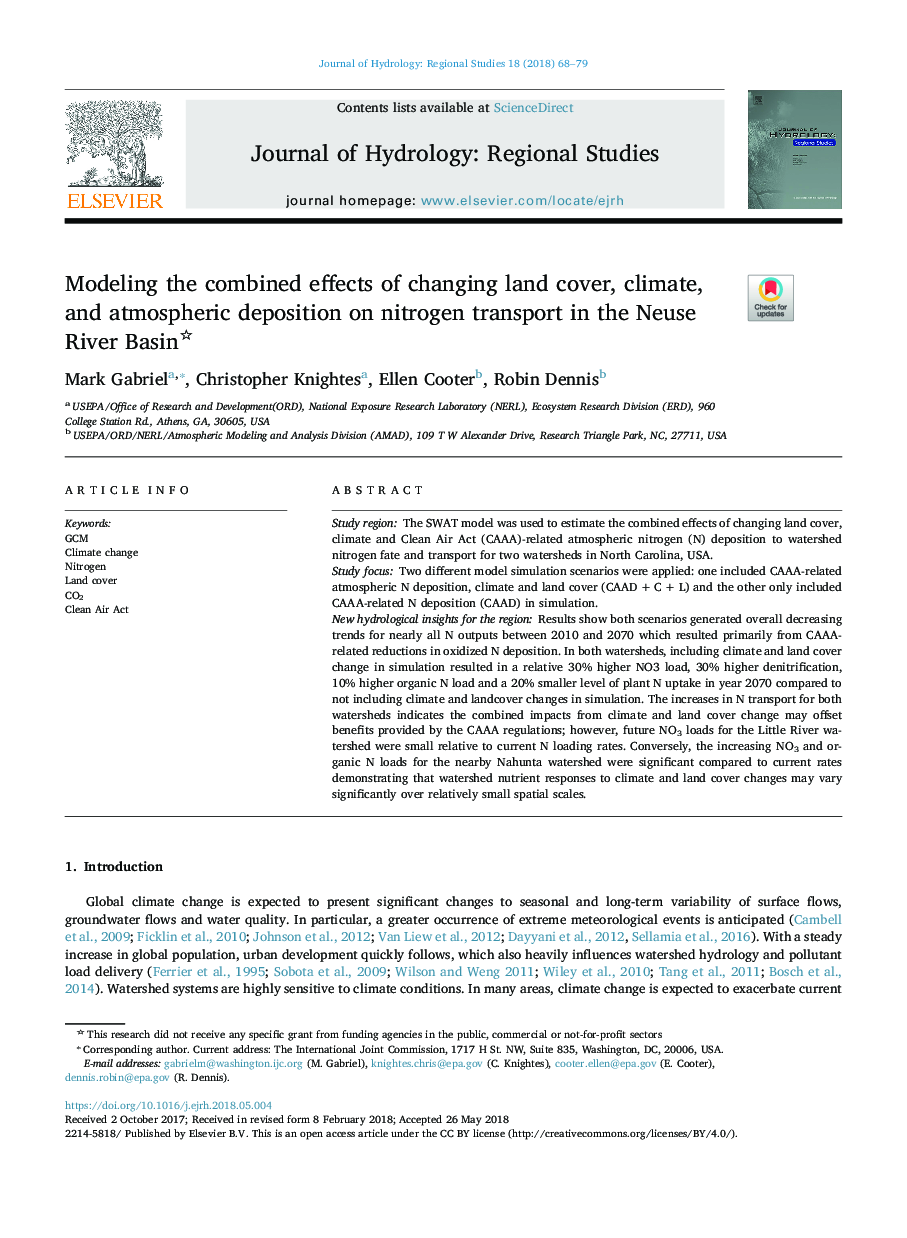| Article ID | Journal | Published Year | Pages | File Type |
|---|---|---|---|---|
| 8862860 | Journal of Hydrology: Regional Studies | 2018 | 12 Pages |
Abstract
Results show both scenarios generated overall decreasing trends for nearly all N outputs between 2010 and 2070 which resulted primarily from CAAA-related reductions in oxidized N deposition. In both watersheds, including climate and land cover change in simulation resulted in a relative 30% higher NO3 load, 30% higher denitrification, 10% higher organic N load and a 20% smaller level of plant N uptake in year 2070 compared to not including climate and landcover changes in simulation. The increases in N transport for both watersheds indicates the combined impacts from climate and land cover change may offset benefits provided by the CAAA regulations; however, future NO3 loads for the Little River watershed were small relative to current N loading rates. Conversely, the increasing NO3 and organic N loads for the nearby Nahunta watershed were significant compared to current rates demonstrating that watershed nutrient responses to climate and land cover changes may vary significantly over relatively small spatial scales.
Related Topics
Physical Sciences and Engineering
Earth and Planetary Sciences
Earth-Surface Processes
Authors
Mark Gabriel, Christopher Knightes, Ellen Cooter, Robin Dennis,
